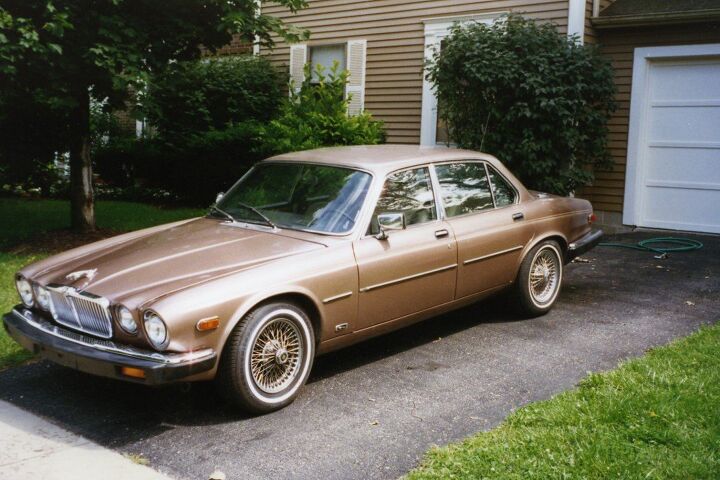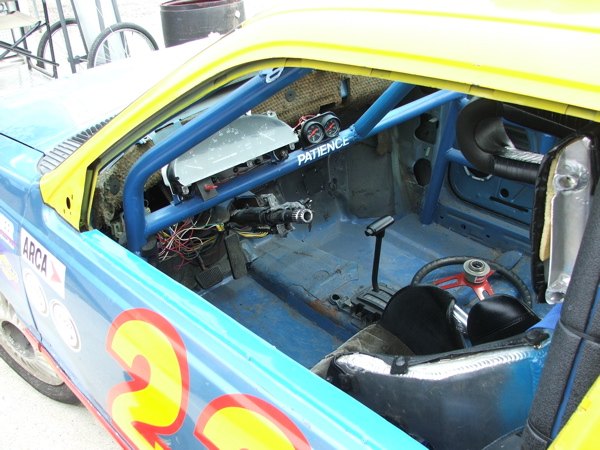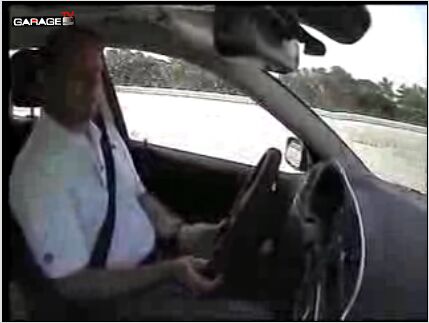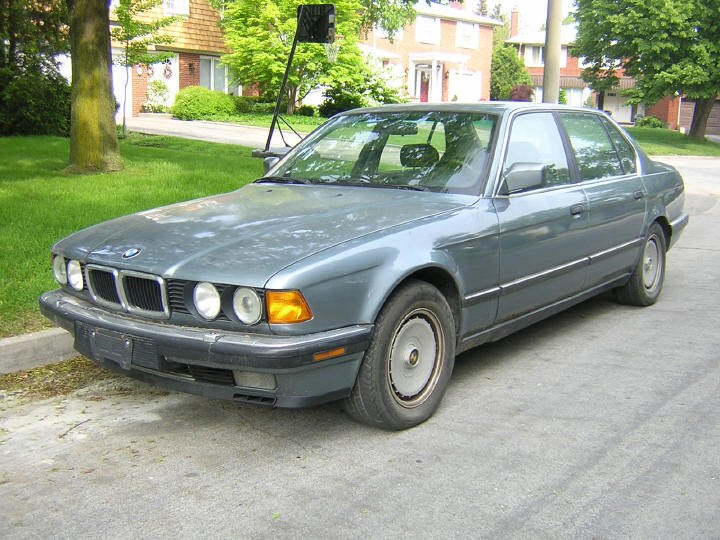#JackBaruth
Ask the Best And Brightest: B-Body or Panther?
The comments on yesterday’s review of the Caprice Classic Estate reminded me how fundamentally deep the Ford-vs-Chevy rivalry is among American auto enthusiasts. Even in the modern era, when both iconic brands are on the run from Toyota, Hyundai, and (soon) the Chinese, there’s still time to catch one’s breath and take a swing at the other guy.
So. The “Panther” platform is scheduled for termination within the next year or so. The General Motors B-body departed nearly a decade and a half ago. There will likely never be another American car of the size and proportions of those two. Which was your favorite? My thoughts, and a link to a credible source, after the jump.
Capsule Review: 1991 Caprice Classic Estate
Donk, Box, Bubble. Say it with me now. Donk, Box, Bubble. And thus the full-size General Motors “B-body” exists in the argot of the urban street. The Donk is the long, flowing, Baroque fifth-generation Impala and its platform twins, sold from 1971 to 1976. The Box is the tidy 1977 model, downsized to perfect, squared-off proportions. To this day, I am not certain that there is a cleaner visual expression of the American full-sized car than the 1977 Impala. Last but not least, we have the Bubble, as seen above. The Bubble was sold as the Caprice Classic (and Impala SS) from 1991 to 1996.
This is my Bubble. Or, I should say, was my Bubble, a casualty on one of the many nameless hills and dimly remembered battles which characterized my marriage. Purchased for $1200 with fifty thousand miles on the clock, it was quiet, reliable, and characterful to a fault. I loved that car. But the boss said I could not own three full-sized cars (I also had two Phaetons at the time) so the Bubble had to be popped.
Trackday Diaries: OSB, ESP, SRT.
OSB. “Other Sports Beckon”. It’s what Skip Barber instructors reportedly used to write on the report cards of utterly feckless driving students. While the phrase may be long gone, the attitude persists among the instructing community that some people just shouldn’t be in the car. I often hear instructors at various events talking about just how horrible/dangerous/contemptible their students are. That’s not right. We are supposed to be coaching the driver to his or her best possible performance, not humiliating them by listing their flaws.
With that said, some drivers present an active danger to themselves, and to their instructors, on the racetrack. I’ve come up with a few guidelines to keep you, the reader, from becoming one of those people, should you decide to give this open-track business a whirl.
Trackday Diaries: The Long and Boring Road.
I do not know precisely when I became an itinerant. For a long time, I traveled the Midwest racing bicycles. When I was too crippled to race a bike I changed to cars. Some years I am gone from home more than half the weekends of the year, racing cars and teaching at various trackday events. I am on the road four days a week at a minimum in my day job anyway.
Constant motion distorts time, preventing one from seeing the growth of flowers or children. It distorts perspective, focusing attention on the next event and blurring what comes after or came before. It distorts relationships. Friends exist on the phone and the Web. We never touch or meet, comets locked on disparate orbits. A contrail of romantic episodes crystallizes to angry ice in the sky behind me. “I should have known,” an e-mail in my inbox reads, “that nothing you ever told me was real, or true.”
This is what is real and true: the next racetrack and the road to get there.
Capsule Review: 1985 Jaguar XJ6 Vanden Plas
I could bore you all with the long story of how I ended up in the check-cashing business — it involved an attack with a broomstick and a coffee mug — but instead we will simply join the action in medias res some time in 1996. I am standing on the used-car lot outside Welsh Enterprises choosing my XJ6. Bill Welsh, the owner, had just treated me to lunch at “Jaggin’ Around”, the restaurant he owned in Steubenville, Ohio. A millionaire several times over from his intelligent decision to purchase some sixty-odd E-Types for pennies on the dollar in the Seventies and resell them at top whack in the Eighties, he was cheerfully burning his afternoon as I drifted among no fewer than six solid-condition Series III Jags, none priced above $4995. Clearly, this was more about amusement than money.
A Bargain At $74,400, But Watch Out For Camrys At Stoplights
In my off-site review of the Porsche Panamera Turbo, I wrote
After years of reminding auto enthusiasts that pure power and performance numbers don’t make for a perfect car, Porsche has gone ahead and proved the point themselves.
So. Take a sedan which is primarily notable for its racetrack performance… and remove that performance. What do you have? You have the Porsche Panamera V6.
Capsule Review: 1996 Ford Thunderbird and the Gigolo Skills
So where were we? Oh yes. After wandering the earth (and working in a call center) for the first few months of 1995, I ended up at a very small Ford dealership located in the heart of Columbus, Ohio. On my first day, I was paired with another fellow who was also starting out at the dealership. I’ll call him… Rodney. He was an outgoing, cheerful thirty-one-year-old man who looked remarkably like the Colt 45-commercial-era Billy Dee Williams. Rodney was very interested in the dealership’s demo program, because he didn’t own a car. Every day he walked from his apartment a mile or so away, and every night he walked back home. The general manager took pity on him and broke the thirty-days-of-service-before-a-demo rule to put him in a Ranger Club Cab.
I started slowly at the dealership but by the time the 1996 model year rolled around I was regularly one of the top two or three guys on the board every month. More importantly, I was the most effective advocate in the shop for the Red Carpet Lease 24-month program. One month I moved 16 units and leased 14 of ’em. At least three of those were people I’d had to dissuade from writing me a check for the whole car on the spot. That’s right, I converted cash buyers to lessors. Why? There was a fifty-dollar spiff.
I was eventually rewarded for my performance by being permitted to order my own demo, just like the 55-year-old Brylcreemers who had been serving at the store since before ‘Nam. I knew exactly what I wanted. Start with a 1996 Thunderbird LX, black with beige interior. Add just three options: Compact disc player. Power Moonroof. And, most importantly, a 4.6 “mod motor”. The order was accepted at the factory. I was four weeks away from my ‘Bird. But Rodney had some other plans involving Ford’s aging coupe…
Capsule Review: 1994 Infiniti J30 and the Magic Lease
“We need young, college-educated people like you,” the man said, “because the old way of selling cars is dead and gone. That’s why I was hired — to bring the dealership into the present day.” And with those thoroughly self-deceived words, the new sales manager at “Infiniti Of Columbus” welcomed to me to the team in March of 1994. It was the end of winter in Ohio, but it was just the middle of Infiniti’s long winter of discontent. We had three products. There was a facelifted Q45 which precisely nobody wanted. There was a facelifted G20 which cost nearly as much as a Lexus ES300 while closely resembling a Nissan Sentra inside and out. Note, however, that the G20 shared nothing but the engine with the aforementioned Sentra. On any given month, we would sell two G20s and no Q45s. In fact, during my entire six months’ tenure at the store, we only sold two Q45s, one of them to a salesman who was quitting to go work for Merrill Lynch.
It was the new-for-1993 J30 that kept the lights on and paid our meager draws against commission. The jellybean-shaped, rear-wheel-drive sedan was available as a J30 or J30t. Neither car had any options available: in an amazing reductio ad absurdum of the Japanese export philosophy, the equipment list was the same for every single car that came off the boat. The “t” model added HICAS four-wheel-steering, a rear spoiler that truly spoiled the otherwise interesting design, and some cross-spoke wheels. They were hideously expensive — $37,995 and up in an era where an LS400 could be had for fifty grand or less — and they were both controversial-looking and suspiciously similar to a Nissan Altima at a distance. (Jerry Hirschberg designed ’em both.)
It didn’t matter. We rarely sold any outright, but more than 20 would leave the lot every month thanks to the Magic Lease.
Autocross: Is It Really Entry-Level Motorsport?
Are those people wasting their time, or do they provide the necessary base for the racing pyramid? This question was asked by a reader in my recent piece about racing an ARCA Tempo, and I think it’s worth discussing for a moment despite the fact that autocross-related articles have consumed enough electrons on the ‘Net to cause jealousy among the folks who operate the Large Hadron Collider.
I will start off by freely admitting that autocross is an area where I do not particularly excel as a driver. In the right car, on the right track, I’m nearly as fast as anyone in the business and I have the track records and wins to prove it. In my single season of National-level SCCA autocross, however, I finished slightly above midpack in three Tour events and almost exactly midpack in the Solo Nationals PAX Index. My modest gift as a driver is a willingness to accept a little bit of danger, which means I frequently find a little more velocity in high-speed corners around racetracks. In autocross, that’s a useless skill. My weakness as a driver is temper, which makes me a solid passer but absolutely abysmal third-run autocrosser.
Since I’m the closest thing TTAC (or nearly anybody else in the autoblogging world) has to a National-level cone-chaser, however, I’ll talk a bit about what autocross is and what it is not.
Five-Point Belts Will Paralyze You and Other Fun Safety Facts
What is that car? Some of you will figure it out immediately, while the rest will want to sneak a peek at the end of this article. Regardless of the make and model, here’s what it is: it’s a race car that competes in an entry-level ARCA series. No longer street legal. Not even close. Since it’s a race car, it uses (some) racing safety equipment. That’s all well and good. There’s a problem, however. In the past couple of years, I’ve seen more and more drivers incorporating “harness bars”, four-or-five-point belts, and other racing-style accessories in their street/trackday cars. Those people are risking their lives, and if you’re one of them, you should keep reading.
The Last Good Honda: Mid-Ohio Retires Its TSX Fleet
It was a gloomy April afternoon when I “won” my first “race”. Hours before, I had stood among a nervous, shuffling group of men as Tommy Byrne, the mercurial, self-destructive, and inhumanly talented Competition Director of the Mid-Ohio Sports Car Course, had explained what we would need to do to survive his “comp school”: Don’t crash the car, make sure you follow the rules, and don’t drive too slowly. Simple as that. I did not know at the time that I would finish the season with a controversial demotion down the podium of the NASA National Championship, and I certainly did not know that not all of the men around me would survive our first year racing together. I just knew that I wanted to win everything I could.
My car for that comp school was #26 in Mid-Ohio’s fleet of five-speed, four-cylinder Acura TSX A-Specs. (Correction: this was a six-speed. I never got it up to sixth. Thanks to hans007) Although I’ve raced other Hondas since, from the Pakistan Express ’89 Civic Si to the Compass 360R Mugen-motored Grand-Am ’08 Civic Coupe, that tough little sedan is burned into my mind. With this week’s announcement that Mid-Ohio has returned its fleet of 2006 TSX A-Specs to Honda, I thought I would take a moment to share my memories of the car with you. It’s depressing to consider, but in many ways that TSX was the last truly good Honda to come to these shores.
"Air Crash Investigator" Peter Cheney Pins Porked Porsche On… Society
TTAC was one of the first sources to call BS on Globe and Mail journo-hack Peter Cheney’s ridiculous justification for his son’s press-car incident, but as the week went on, more and more outlets picked up on the obvious fact that Porsches don’t jump out of garages on their own. There’s this thing called a “clutch interlock switch”. Mr. Cheney likely figured that, since he doesn’t know much about cars, that the public would know even less. Oops!
The decent thing to do in these circumstances would be to simply apologize to one’s readers and then to return to the whirlwind lifestyle of far-flung press events, free $180,000 cars, and hilariously low performance standards which is synonymous with “automotive journalism”. It would have been quickly forgotten. The man who was responsible for approving Cheney’s original Porsche loaner flat-out told me, “I’ll give him another one.” Of course he will! Porsche, and everybody else in the business, is perfectly prepared to turn a blind eye to Cheney’s misdeeds past, present, and future. I was recently contacted by an anonymous Canadian source who told me that “Cheney’s kid drives press cars all the time, and everybody knows it.” So what? We’re on the gravy train now! Let’s keep it rolling!
Mr. Cheney, of course, can’t just let that happen. He’s apparently done enough “real” journalism in his life to know that there needs to be a culprit behind this incident, and he’s self-deluded enough to somehow miss the fact that his own spoiled son is to blame. As a result, we’ve been treated to another story, in which Cheney, um, finds the real killers. “Now,” he hilariously writes, “I was searching for answers, sifting through the debris like an air crash investigator.”
Just Say No… To Shuffle Steering
Last year, Volkswagen decided to hand a truly spectacular insider freebie to the fellow who runs a popular VW owners’ forum: an all-expenses-paid race in the TDI Cup at Road America. The TDI Cup is meant to be a talent showcase for twentysomething novice drivers whose parents can come up with $45,000 and all related expenses, but VW waived all the age, talent, financial, and racing-resume requirements for our forum friend.
Prior to the event, several people asked me “How’s he gonna do?” My iron-clad prediction was that he would finish DFL, and that would only be because there’s no place in a race behind DFL. I’d only met the guy once, but I’d seen the video which is freeze-framed above, and that was enough for me to play amateur odds-maker. In this video, we repeatedly see him “shuffle-steer”. Shuffle-steering is a word for what most of us do on the street every day: change the position of our hands on the steering wheel while turning. It’s comfy, it’s useful for downtown parking, and I find it to be very useful when I’m texting on back roads, but on a racetrack, it is the mark of the chump.
Capsule Review: 1989 BMW 750il At (Top) Speed
Now it can be told, more than twenty years after the fact. This recent kid-smashing-up-press-car incident has caused me to think about my own misspent youth and the potential parallels between it and that of Little Lord Cheney. My father was a decorated war hero rather than a demoted war reporter, and when I crunched the nose of my first car my dad responded by taking away my license for an entire year and forcing me to ride a bicycle to my job washing dishes from 8pm to 2am at the local pizza-delivery place. He also made me learn how to drive on his stick-shift BMW 733i, so I never had the chance to drive a car through a garage door.
Still, I can point to a few incidents of damn-the-torpedos bad judgment in my teen years, and perhaps my favorite one was the day I found myself behind the wheel of a brand-new BMW 750il and decided to take a shot at one hundred and fifty-five miles per hour.
Track Test: 2011 Mustang V8 W/Brembo Brakes
As I exit Turn Eleven at Summit Point Raceway’s twisty, concrete-lined “Shenandoah” course, I’m confronted with a rare opportunity to put my money where my mouth has been. In a review of the 2011 Mustang GT 5.0, I perhaps foolishly opined that “C5 Z06 pilots will need to find a twisty road lest they be run nose-to-tail down long freeway sprints.” Now I’ve found myself fifty feet behind an enthusiastically-driven C5 Z06, and it’s squatting with full throttle up Shenandoah’s Bridge Straight. This will be a straight drag race, and for extra irony it’s going to occur on a road course. Four tires chirp. Sixteen cylinders sing. Forty to one hundred and ten miles per hour. Up a hill. Was I wrong? Can the mighty five-point-oh hunt for Corvettes?





























Recent Comments